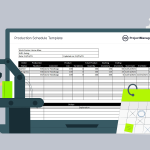Heat is not just uncomfortable. It saps frame rate, raises input delay, and shortens battery life. Mid-range Androids can hold steady when the workload, radios, and charging are kept in check. Cooling does not require a fan case or a new phone – it needs a few practical tweaks that cost little and take seconds to apply.
The goal is straightforward: maintain silicon within its optimal efficiency range to prevent clocks from throttling at critical moments. The playbook below focuses on habits that travel across brands and chipsets, with a single, focused checklist to run before every session.
Heat is the hidden FPS killer
Most temperature spikes come from a short list of culprits: bright screens, background apps, radio congestion, and charging under load. Controlling those inputs keeps performance where it should be. For readers who like a quick, neutral cross-check on setup essentials, a plain guide sits on this website – skim it once, then return to the steps below.
Here is the lean, low-cost toolkit that makes the biggest difference:
- Drop brightness one notch – the eye adapts quickly, yet panel power and heat fall immediately.
- Use a natural display profile – vivid modes push saturation and perceived glare, which leads to over-bright settings and extra thermal load.
- Kill background sync – pause cloud backups, gallery indexing, and social apps that poll sensors while a session runs.
- Prefer 5 GHz Wi-Fi or strong mid-band 5G – cleaner links reduce retransmits that heat radios.
- Remove the bulky case – trapped heat throttles performance; a slim grip or strap keeps hold without insulation.
- Avoid charging while playing – if power is needed, use a slow charger and keep the battery between 30-80 percent.
None of these requires purchases. Each trims a few degrees, and together they stop throttling in the moments that count.
Prep the phone before play – the 90-second routine
A quick routine prevents the most common slowdowns. Close camera, maps, and social apps; they continue polling GPS, mic, or network even when minimized. Switch on the device’s game mode to block calls, freeze background activity, and boost touch priority. Set refresh to High or Adaptive, then match the game’s frame cap. A mismatched cap wastes cycles and creates stutter that forces longer sessions – more time equals more heat.
Lock rotation if accidental flips are common. Disable Bluetooth and Nearby Share in crowded rooms – both search for peers and add radio chatter. Place the phone on a stand so air can flow around the back panel. Palms act like mitts; even a cheap foldable stand reduces skin contact and helps the device shed heat.
Charge smarter – power without the thermal tax
Charging while playing is the quickest path to a hot chassis. Power delivery warms the battery and the board, then the system lowers clocks to protect itself. If a top-up is unavoidable, avoid “turbo” bricks. Use a slow charger, set the device on a stand with the case off, and dim the display slightly. Some phones include “bypass charging” or “charge to 80%” in developer or battery settings – both reduce heat by limiting battery stress.
Portable batteries can be useful on the go, but treat them like a pit stop. Pause the session, plug in for a few minutes, and resume after a quick cool-down. Short breaks prevent the long, hot soak that throttles hardware for the next thirty minutes.
Make the game lighter without losing feel
Not all settings are equal. Lowering post-processing and heavy effects saves more heat than reducing textures. Post-effects – dynamic shadows, ambient occlusion, motion blur – add GPU work that brings little benefit on a five- to six-inch screen. Keep textures at Medium so edges and UI remain crisp. Cap frames a few ticks below the display refresh – for example, 116 on a 120 Hz panel – to avoid micro spikes that waste power and create heat.
Audio also plays a part. Compressed crowd beds and limited peak volume keep the DSP from working overtime. Subtitles with moderate opacity reduce the need for extra brightness in dark scenes. Small efficiency gains across graphics and audio stack into cooler runs that feel smoother even at the same nominal frame rate.
Small ergonomics, bigger comfort
Hands heat phones. A matte screen protector reduces sweat and glare, which keeps brightness lower indoors. A slim ring or strap improves grip without the thermal penalty of a thick case. Closed-back earbuds with a low-latency mode allow lower system volume while preserving cues – less speaker drive equals less heat at the amplifier. Keep a microfiber cloth nearby; clean glass looks brighter at lower nits.
Environment matters. A desk fan on low, pointed past the phone rather than at it, moves warm air away without noise. Avoid sunlit windows – direct light forces maximum brightness and cooks the chassis. Between matches, lock the screen for sixty seconds. Brief cool-downs recover performance more effectively than any “boost” toggle.
A cooler phone is a faster phone. With a handful of cheap habits – lean brightness, quiet radios, no charging under load, lighter post-effects, and smarter ergonomics – mid-range Androids keep frames steady and inputs crisp. Sessions stay enjoyable, devices stay healthy, and energy goes where it should – into timing and focus, not heat.





Facebook comments